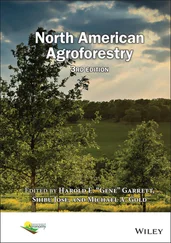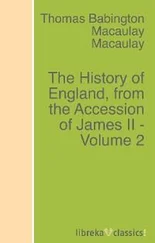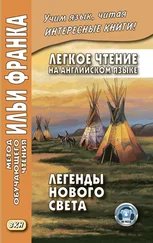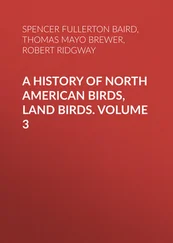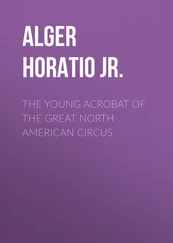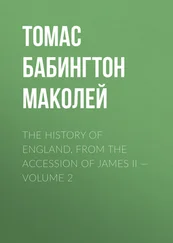Robert Ridgway - A History of North American Birds, Land Birds. Volume 1
Здесь есть возможность читать онлайн «Robert Ridgway - A History of North American Birds, Land Birds. Volume 1» — ознакомительный отрывок электронной книги совершенно бесплатно, а после прочтения отрывка купить полную версию. В некоторых случаях можно слушать аудио, скачать через торрент в формате fb2 и присутствует краткое содержание. Жанр: foreign_antique, Биология, foreign_edu, на английском языке. Описание произведения, (предисловие) а так же отзывы посетителей доступны на портале библиотеки ЛибКат.
- Название:A History of North American Birds, Land Birds. Volume 1
- Автор:
- Жанр:
- Год:неизвестен
- ISBN:нет данных
- Рейтинг книги:3 / 5. Голосов: 1
-
Избранное:Добавить в избранное
- Отзывы:
-
Ваша оценка:
- 60
- 1
- 2
- 3
- 4
- 5
A History of North American Birds, Land Birds. Volume 1: краткое содержание, описание и аннотация
Предлагаем к чтению аннотацию, описание, краткое содержание или предисловие (зависит от того, что написал сам автор книги «A History of North American Birds, Land Birds. Volume 1»). Если вы не нашли необходимую информацию о книге — напишите в комментариях, мы постараемся отыскать её.
A History of North American Birds, Land Birds. Volume 1 — читать онлайн ознакомительный отрывок
Ниже представлен текст книги, разбитый по страницам. Система сохранения места последней прочитанной страницы, позволяет с удобством читать онлайн бесплатно книгу «A History of North American Birds, Land Birds. Volume 1», без необходимости каждый раз заново искать на чём Вы остановились. Поставьте закладку, и сможете в любой момент перейти на страницу, на которой закончили чтение.
Интервал:
Закладка:
Feet highly raptorial, with large, strong, sharp, curved, contractile claws, adapted for grasping. Hallux perfectly incumbent, lengthened (more than half as long as the fourth toe), with large claw. Front toes with slight basal webbing between outer or middle ones, or none; outer toe often reversible. Nostrils imperforate. Bill short, stout, not notably contracted in its continuity, with strongly hooked tip; tomia often once-twice toothed or lobed. Head feathered wholly or in greatest part. Lower larynx developed with one pair of muscles. Plumage with or without after-shafts. Cœca present, as a rule, if not always.
Physiognomy peculiar by reason of great lateral expansion and lengthwise shortening of the cranium, causing the eyes to be directed forward. Eyes surrounded by a disc of radiating bristly feathers, in front closely appressed to and hiding the base of the bill, elsewhere bounded by a rim of differently formed feathers. Tomia never toothed or lobed. Nostrils usually at the edge of the cere. Outer toe completely versatile, shorter than the inner toe. Basal phalanx of middle toe not longer than the second, and much shorter than the next. Legs commonly feathered or bristly to or on the toes. Plumage peculiarly soft and lax, without after-shafts; flight perfectly noiseless. Cranial walls widely separated by intervention of spongy diploë. Sternum commonly doubly notched. Chiefly nocturnal … Strigidæ.
Physiognomy not peculiar in any lateral expansion of the cranium; the eyes lateral in direction. No complete facial disc; base of bill not hidden by appressed bristles. Nostrils wholly in the cere. Outer toe rarely versatile, except Pandion , etc.; not shorter than the inner. Basal phalanx of middle toe longer than the second. Legs commonly naked and scutellate or reticulate in some portion of their length; toes always bare and scaly. Plumage compact, usually with after-shafts; flight audible. Cranial walls with little diploë. Sternum commonly single-notched or fenestrate, sometimes entire. Diurnal … Falconidæ.
Feet scarcely raptorial, with lengthened, little curved or contractile, weak, short claws. Hallux elevated, shortened, not more than half as long as the fourth toe, with small claw. Front toes all webbed at base; middle toe lengthened; outer not reversible. Basal phalanx of middle toe longer than either of the succeeding. Nostrils perforate. Bill lengthened and comparatively weak, little hooked, contracted in its continuity; tomia not toothed or lobed. Head naked of feathers in greatest part; sparsely bristly. No lower larnyx developed. No cœca. After-shafts absent … Cathartidæ.
With characters essentially as in Columbæ (exclusive of those peculiar to Diduncudidæ and Dididæ ). Plumage without after-shafts; the feathers with thickened, spongy rhachis loosely inserted in the skin. Head small, completely feathered, excepting sometimes a circumorbital space. Tarsi naked or only feathered a little way above. Tail of twelve feathers, or lengthened, cuneate, and of fourteen. (Hallux not perfectly incumbent in Starnænas .) … Columbidæ .
Hind toe lengthened, insistent. Tail-feathers twelve. Sides of head and throat with naked spaces. Color greenish … Cracidæ.
Hind toe shortened, elevated. Tail-feathers usually fourteen or more. No green.
Large. Tarsi, toes, and nasal fossæ naked. Head bare of feathers, sparsely bristly, with wattles and caruncles. A pectoral tuft of bristly feathers. Tarsi usually spurred in the male. Plumage iridescent … Meleagrididæ.
Medium. Tarsi wholly or in great part, sometimes also the toes, and always the nasal fossæ, feathered. Head completely feathered, excepting a definite papillate strip over the eye. Tail-feathers sixteen or more. Sides of neck usually with lengthened feathers, or a naked distensible area, or both. No spurs. Plumage without iridescence … Tetraonidæ.
Small. Tarsi, toes, and nasal fossæ naked. Head completely feathered. No peculiar feathers or tympanum on sides of neck. No spurs. Plumage not iridescent … Perdicidæ.
Toes not lobate. Tarsi not notably compressed.
Legs extremely long; the tarsus equalling or exceeding the tail, and feet either four-toed and palmate ( Recurvirostra ), or three-toed and semipalmate ( Himantopus ); with the bill much longer than the head, very slender, acute, and curved upward … Recurvirostridæ.
Legs moderate, stout. Tarsus shorter than tail. Bill hard, more or less contracted at base, with short nasal fossa, gonydeal angle, and ascending gonys, the tip either compressed and truncate or depressed and acute. Feet three-toed and with basal webbing ( Hæmatopus ), or four-toed and cleft ( Strepsilas ) … Hæmatopodidæ.
Legs moderate. Tarsus shorter than tail, reticulate. Hind toe wanting (except in Squatarola , where very small, and in Aphriza ). Bill short, straight,—not exceeding the head (generally shorter),—shaped like a pigeon’s, with short, broad, soft nasal fossæ separated by a constriction from the enlarged, obtuse, horny terminal part. Head large, globose, contracting suddenly to the bill. Neck short … Charadriidæ.
Legs moderate. Tarsus shorter than tail, scutellate. Hind toe present. Bill long,—equalling, or oftener exceeding, frequently several times longer than, the head; softish and membranous to the very tip, without constriction in its continuity; straight or variously curved … Scolopacidæ.
Toes lobate. Tarsi notably compressed.
General characters of Scolopacidæ . Body depressed; the under plumage thickened, duck-like. Habits natatorial … Phalaropodidæ.
Hallux lengthened, perfectly incumbent, with large claw. Tarsi scutellate. Middle claw pectinate. Bill perfectly straight, tapering, acute. Loral region definitely naked, continuous with covering of the bill. Head narrow, elongate, tapering … Ardeidæ.
Hallux somewhat reduced, less perfectly incumbent. Tarsi commonly reticulate. Middle claw not pectinate. Lores, gular space and usually more of the head, naked. Bill variously curved or with expanded tip. (Genera Tantalus , Ibis , Mycteria , and Platalea .) … Tantalidæ.
Of great stature, with extremely long neck and legs. Part or all of the head bare. Toes much shorter than the tarsi; with basal webbing, but without lobation; hallux very short, highly elevated. Bill equalling or exceeding the head, compressed, perfectly straight, contracted about the middle, with enlarged acute terminal portion; nasal fossæ wide and deep, with large perforate nostrils … Gruidæ.
Size moderate and small; neck and legs comparatively short. Head completely feathered, excepting, in the Coots and Gallinules, a broad horny frontal plate. Toes equalling or exceeding the tarsi, simple or lobate. Bill not constricted in the middle, rather shorter than the head, straight and quite stout; or much longer, regularly slender and decurved, with long nasal fossæ. Nostrils incompletely or not perforate … Rallidæ.
Of great stature, with extraordinarily lengthened neck and legs. Bill of unique shape, bent abruptly down from the middle. Tibiæ naked below. Hind toe minute or absent. Wings rounded. Red the chief color … Phœnicopteridæ.
Читать дальшеИнтервал:
Закладка:
Похожие книги на «A History of North American Birds, Land Birds. Volume 1»
Представляем Вашему вниманию похожие книги на «A History of North American Birds, Land Birds. Volume 1» списком для выбора. Мы отобрали схожую по названию и смыслу литературу в надежде предоставить читателям больше вариантов отыскать новые, интересные, ещё непрочитанные произведения.
Обсуждение, отзывы о книге «A History of North American Birds, Land Birds. Volume 1» и просто собственные мнения читателей. Оставьте ваши комментарии, напишите, что Вы думаете о произведении, его смысле или главных героях. Укажите что конкретно понравилось, а что нет, и почему Вы так считаете.


